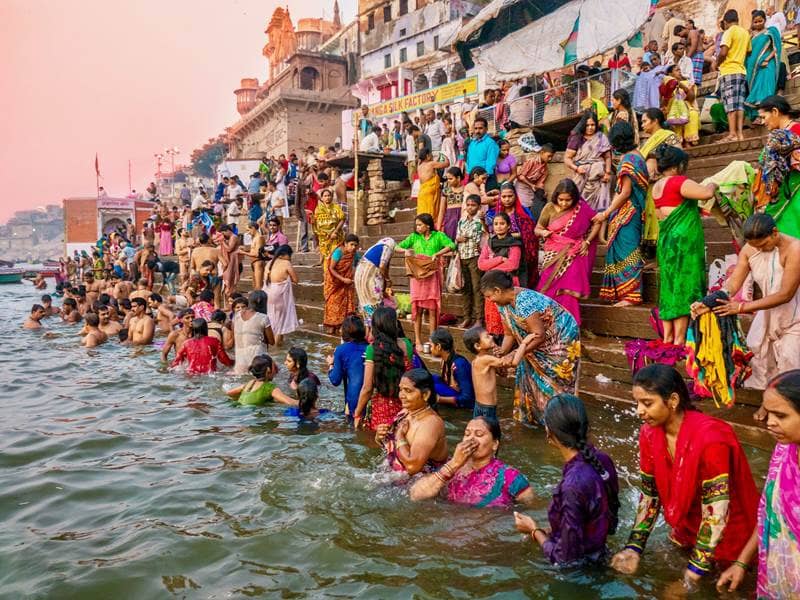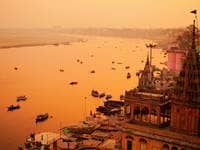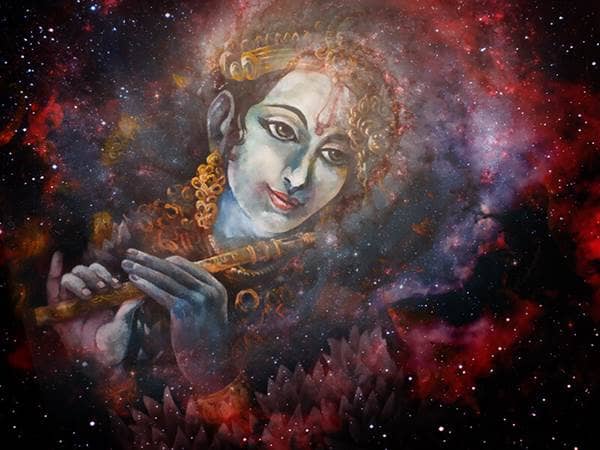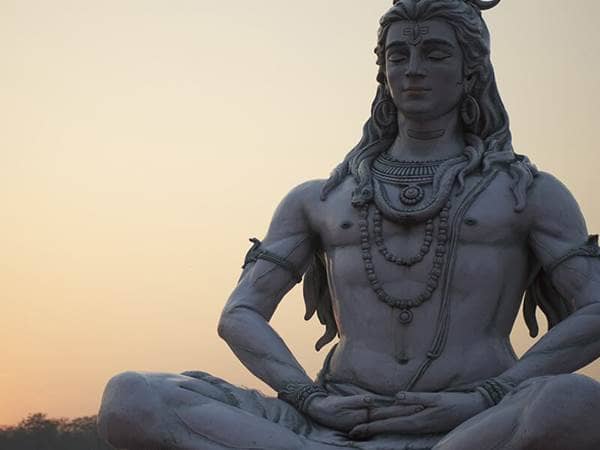
- Trending:
- Forgiveness
- |
- Resurrection
- |
- Joy
- |
- Afterlife
The 100 Most Holy Places On Earth
The River Ganges





Associated Faiths:
To a lesser extent, Buddhism and Jainism. The Pew Research Center found that some Muslims and Christians also believe its waters have healing properties--though this view would be rare and not mainstream.
Accessibility:
Open to visitors.
Annual visitors: 20,000,000
History
The River Ganges, also called “Ganga” (in Hindi), is a 1,560-mile-long river that starts in the Himalayan mountains and empties into the Bay of Bengal. Watering a quarter of India, and supporting the lives, crops, and livestock of hundreds of millions of Indians, it has been the “lifeblood” of India for millennia.
The river is commonly called “Ganga Ma” or “Mother Ganga” because of its life-giving waters. Ganga Devi is a Hindu goddess, believed by Hindus to be the “personality of the Ganges River.” Because of its association with her, the Ganges River is considered sacred—the most holy of any river in the world. Because of the sacral nature of the Ganges River (in the minds of Hindus, but other Indians as well), several sacred edifices have been built on or near its banks.
For example, the Gangotri Temple (in northern India), the Kashi Vishwanatha Temple (of the holy city of Varanasi) and the 13-story Trimbakeshwar Shiva Temple (in the western peninsular region of India). In addition to these temples built on the Ganges, there are literally hundreds of other shrines and Hindu temples which—while not on or at the Ganges, are close enough to access its sacred waters and warrant a pilgrimage from the temple to the Ganges, and from the Ganges back to the temple. Hindu lore teaches that the Ganges descends from heaven to earth—through the grace of Ganga and also Shiva. Because it is the place where the sacred waters come down to the earth, many Hindus also believe it is the “vehicle of ascent” which can convey the deceased from earth back to heaven.
Thus, in places like Varanasi, bodies are cremated and sprinkled in the water, ideally sending them heavenward—hopefully for eternity. In times past, sometimes bodies were washed in the Ganges, wrapped in cloth, and floated down the sacred river—theoretically sending the ātman (i.e., “breath” or “animating power”) of the deceased heavenward. The Ganges’ five headstream rivers are the Alaknanda, the Bhagirathi, the Dhauliganga, the Mandakini, and the Pindar. Each feed the river that then feeds the people. The volume and flow of the river fluctuates throughout the year, based on several factors.
For example, in the locations where more tributaries feed into it, it exhibits stronger currants and higher levels of water. Similarly, in regions where it is common for there to be heavier annual rainfall, the river is also stronger and swifter. Of course, the seasons also affect the Ganges’ strength and flow. For example, between the months of April and June, the melting Himalayan snows turn to frigid waters which feed the river. From July through September—which tends to be the rainy season—the monsoons cause the Ganges to overflow, commonly causing floods. During winter months (of October through March), however, the river’s flow greatly declines.
Religious Significance
People visit the Ganges and its various banks throughout the parts of India through which it flows. While certain parts are considered more sacred than others (e.g., the portion of the River that passes through Varanasi), it is the river more than the location that is sacred. Indeed, tradition has it that bathing in the Ganges River can actually guarantee that you experience moksha (or liberation), thereby ensuring samsara (i.e., freedom from the cycle of rebirths) and the achievement of Nirvana at the conclusion of this life.
Thus, like Muslims who seek to make at least one hajj (or pilgrimage) to Mecca in their lifetime, faithful Hindus see the Ganges as a place one must visit at least once in one’s life—and many Hindus seek to live close enough to the river that annual pilgrimages are possible (though many visit much more frequently than that). As the source from whence the Ganges starts, the Gangotri Temple is also the seat of the goddess Ganga.
According to Hindu tradition, King Bhagiratha wanted Ganga to send the waters from heaven down to the earth, as he wanted those sacred waters to purify the remains of the sons of his great-grandfather. Ganga explained to the king that if she allowed the heavens to open and the water to flow freely down to earth, the force of the waters would destroy the planet. So, the king petitioned Lord Shiva to allow the waters to fall from heaven onto his head, and from there to trickle down to the earth, thus eliminating the force of the waters and their damage to the earth. Shiva agreed to do so. He sat in meditation as the waters poured out of the heavens—and the extremely loud Sahasradhara Falls (in Gangotri) are believed to be where he received those sacred heavenly waters. It was through the coils of Shiva’s hair that the waters of the sacred Ganges made its way to the earth. Since the Ganges River really is the lifeline of India, providing water for crops, animals, and people, it is viewed as incredibly holy. It is itself a living, breathing, moving god (in the minds of traditional Hindus). And if the Ganges is the most sacred of all rivers, the head of the Ganges is even more sacred. Whereas the goddess Ganga Devi is the “mother of humanity,” the Gangotri Temple (which rests at the head of the Ganges) is the umbilicus through which she dispenses her life-giving and life-sustaining waters to the subcontinent of India.
As a sacred flowing body of water, Westerners are often surprised by the filth that is often found in and around the Ganges. For those of Christian traditions, the “sacred space” which is the Ganges almost seems disrespected by the pilgrims who frequent this holy site. Westerners find it paradoxical that such a holy place (in the eyes of Hindus) could be left in such a seemingly “unholy” state of care. However, for Hindus, this is a misperception by Westerners. The Ganges is holy, in spite of the garbage in and around it. And what the gods have deemed holy, humans do not have the power to ruin or make unholy. Indeed, the rubbish so common in and along the banks of the Ganges River is a symbol of why each Hindu should regularly visit the Ganges and immerse himself or herself in it.
The garbage represents the presently polluted state of the world and all beings living thereon. To immerse oneself in the Ganges is to make an effort to reverse that “pollution.” Thus, the filth is sacred like the River—because the filth is a reminder of why we need the Ganges. The river was given by the gods to help us connect with the divine, to remit the karma that keeps us away from the gods, and to cleans the path which leads to Nirvana. Thus, like the Ganges River itself, its seemingly “fallen” environment stands as a testament to why all of us traverse this fallen earth.








